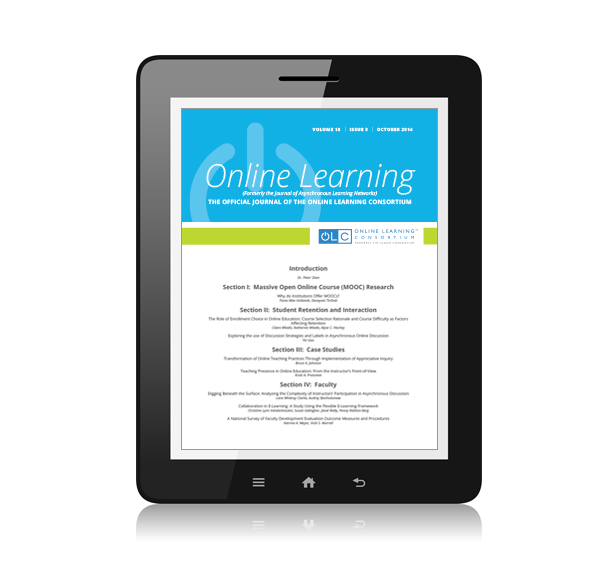Table of Contents
This issue of OLJ explores several important themes related to online teaching and learning including faculty, student, and institutional concerns. We invite you to read, share, and cite the high-quality papers in this issue and help us to continue to enhance the research and practice of online learning.
Introduction
|
Peter J. Shea
|
|
Faculty, Professional Development, and Online Teaching
|
Nancy Pope Wingo, Nataliya V. Ivankova, Jacqueline A. Moss
|
|
Audrey Smith Pereira, Monika Maya Wahi
|
|
Pamela Beach, Dale Willows
|
|
Ken-Zen Chen, Patrick R. Lowenthal, Christine Bauer, Allan Heaps, Crystal Nielsen
|
Integrating Accessibility into Online Higher Education
|
Chad E. Smith, Samantha Crocker, Tamby Allman
|
Online Academic Integrity
|
Anita Lee-Post, Holly Hapke
|
|
Helaine Mary Alessio, Nancy J. Malay, Karsten Maurer, A. John Bailer, Beth Rubin
|
Students, Community, and Online Learning
|
Baiyun Chen, Aimee deNoyelles, Janet Zydney, Kerry Patton
|
|
Jesus Trespalacios
|
|
Kevin Hannon
|
|
Sedef Uzuner Smith, Suzanne Hayes, Peter Shea
|
|
Jayme N. Linton
|
|
Amy M Roberts, Jennifer LoCasale-Crouch, Bridget K Hamre, Jordan M Buckrop
|
...

